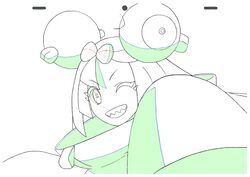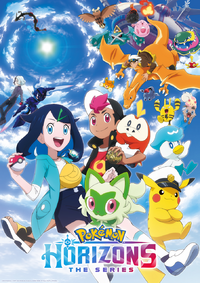User:Boblers/Pokémon anime

|
This article is intended to be moved into one of Bulbapedia's main content spaces. Be mindful that it is still part of a personal userspace. Any content changes should be brought up on the talk page for this article. |
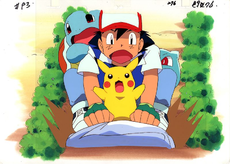
Pokémon animation is a term that refers collectively to animated works in the Pokémon franchise. These can serve as narrative works in and of themselves, or act as promotional material for other aspects of the brand. Most Pokémon animation often adapts the events and world of the core series or spin-off games, with varying degrees of creative freedom. However, some works are independent of this theming, and can explore their own original concepts.
The longest-running series of Pokémon animation is the eponymous Pokémon animated TV series, which debuted in 1997 in Japan and 1998 in the United States, and has spawned a number of tie-in movies and shorts. Since then, additional animated works such as miniseries, shorts, animated trailers, and music videos have also been released.
Animated works made in Japan are often referred to as anime in English, although The Pokémon Company International generally avoids using the term outside of social media posts. Some event Pokémon based on Pokémon from Pokémon animation, such as Ash's Pikachu and Glaseado Mountain Cetitan, have their location set as Pokémon Cartoon, the Pokémon cartoon, or the Pokémon animated show (Japanese: ポケモンアニメ Pokémon anime) in the core series games.
Production
Several steps are taken to produce an animated work, generally in the following order:
- Reference sheets (or Settei) - A set of drawings, ranging from sketches to fully-colored, that establish the designs of characters, objects, and locations. The subject is drawn from several angles and in several poses, to help animators imagine them in motion.
- Storyboard - A set of simple sketches that establishes the order of events in the animation, as well as the positions and actions of characters in a scene. Storyboards can be viewed in sequence, similar to a slideshow, to communicate the flow of a scene.
- Layouts - Elaboration on the storyboard drawings by adding more details, such as to characters or to the environment.
- Key Frames (or Genga) - Further refinements of storyboard or layout drawings, with the goal of making images (or "frames") that define the overall motion. These are then sent to higher-ups, such as animation directors, for approval.
- In-betweening - Once the key frames have been approved, in-between animators use those frames as well as notes from they key animators, to draw the frames in-between the key frames. This establishes the intended motion, as well as styles such as smooth or snappy movement.
Additionally, animation from previous work may be re-used partially or wholly for future work. When this occurs, the re-use of the animation is called a stock animation or BANK animation.
Reference sheet
A Reference sheet, also known as concept art or Settei, (Japanese: 設定 lit. "setting materials") refers to detailed reference material of designs, objects and locations from a variety of angles, given to artists in order to create consistent and accurate work. This is integral for both 2D and 3D artists alike.
Often, the reference sheets officially released by The Pokémon Company in various art books are slightly different than the original reference, as can be seen below with Hapu from Pokémon Sun and Moon.

|
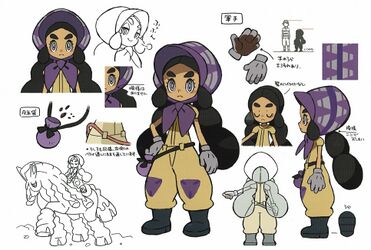
|
| SM Artbook | USUM Artbook |
In reference materials for animated productions, where flat colors are used, the color of each line or filled material represent a different intent when the artwork is to be colored, further arming the artist using the reference with additional context to aid their work.
- Black Lines are used for lines that are not meant to disappear when colored.
- Red Lines are often, though not always, used for specific particular color fills, such as highlights from exterior lighting within a scene whenever applicable.
- Blue Lines best denote a division between a dark and light area, used for shadows. They're invisible when the figure has been fully painted or colored.
- Green or Blue Fills are used for shadowed areas.
- Yellow Fills denote areas that serve as highlights.

|
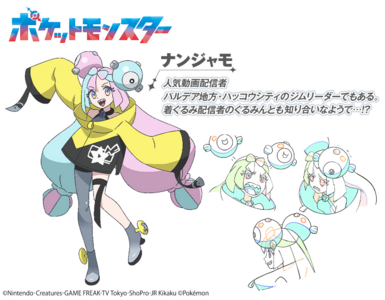
|
| A comparison of two poses from different reference sheets of Arceus from M12 to best illustrate the purpose of differently colored lines and filled areas. |
Iono's reference sheet from Pokémon Horizons |
Storyboards and Layouts
- See also: Storyboard - Wikipedia
Storyboards are the one of the earliest types of minimal production material used for various media to allow artists to better visualize scenes that are going to be developed further, typically by background artists, modelers, animators or a compositing team. They often, though not always, come after reference sheets in the production line. With productions that involve 2D animation, they precede the layout phase as part of the E-konte (Japanese: 絵コンテ lit. "drawing continuity") which is a sequenced series of storyboards that include specific details to assist with the process further down the production line, including planned dialogue and acting instructions.
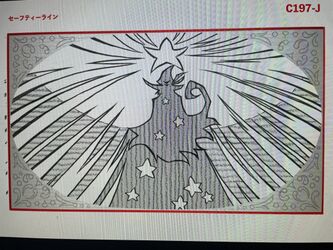
|
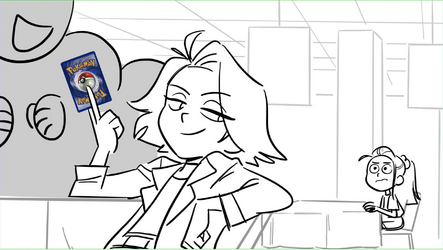
|
| From HZ012 by Yoshikazu Miyao compared to PTP02 by Kiana Khansmith | |
A Layout is a term for the immediate next step of the animation process following a storyboard. Now that a cut or scene has been planned out, it is up to the job of an animator to create a layout that acts as the skeleton of the scene, for artists to follow when further down in the production line. These often feature more intense detail, depth and perspective than the initial storyboard. When compiled, layouts are often animated with rudimentary motion of specific parts in order to aid animators in the next immediate step.
Additionally, the context of what defines a storyboard or layout may change depending on where the production is held. For instance, western artists may refer to storyboards and layouts interchangeably, including use of the term "animatic". An animatic is an early draft of an animated work, where storyboard frames are viewed in sequence, with music, voice, and sound effects added - effectively acting as a rough preview of the final work.
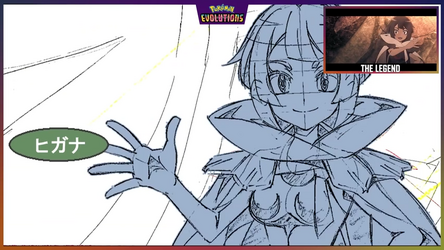
|
| Layout from The Wish |
Key frames and in-betweening
- See also: Key frame - Wikipedia
Key frames, also known as Genga, (Japanese: 原画 lit. "original pictures") refer to specific drawings in 2D animation that establish a scene, and the motions to be animated. Key frames are generally made by refining images drawn during the layout phase, using reference material. Key frames represent critical moments that define the motion within a cut of animation - for instance: if a character is going to jump, there may be key frames of them preparing to jump, being airborne, and landing on the ground. Key frames are drawn by the Key Animator, and are often corrected by those higher up on the production team, such as Animation Directors, (also referred to as Animation Supervisors) Chief Animation Directors, or Character Designers.
After approval, key frames are then traced by in-between (Japanese: 原画 douga) artists, who draw images of the scene between key frame moments. These artists use notes left by the Key Animator for the timing and frame-pacing of the intended motion (for example: smooth or snappy, slow or fast).
Occasionally, this production material is released officially, and in some instances, by staff on the series after their work has been completed.
A list of key frames uploaded to Bulbapedia can be found here.
Stock animation
- See also: Stock footage - Wikipedia
Stock animation, also known as BANK animation or simply BANK, refers to animation that is re-used partially or wholly in a later work. For instance, Z-Moves that are used in the anime will often look identical upon being used again, due to the complexity of the motion and camerawork involved. Occasionally, the use of stock animation is made a little less obvious, as it can also be used to describe the re-use of animation between different Pokémon, characters and scenes than the original animation was used for.

|

|
| From AG103 | BANK in AG121 |
Very rarely, whole content may majorly comprised of BANK animation, such as "recap episodes" (often produced to save time and put the project further ahead of schedule) or, in the instance of M14, is due to the choice to split one movie into two similar ones.
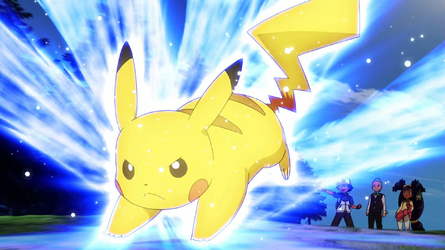
|
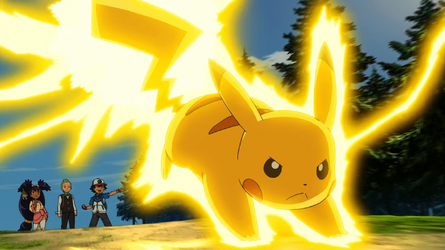
|
| M14's Opening (Black) |
M14's Opening (White) |
Ongoing animation
Animated works listed in this section are currently ongoing, with new episodes released periodically.
Television series
Pokémon (Japanese: ポケットモンスター Pocket Monsters) is an animated series that airs on television in Japan. It is typically disambiguated as the Pokémon TV animated series (Japanese: テレビアニメ「ポケットモンスター」シリーズ TV Anime "Pocket Monsters" Series)[2][3], the TV Anime series Pokémon[4], (Japanese: TVアニメ「ポケットモンスター」シリーズ TV Anime "Pocket Monsters" Series)[5], (Japanese: テレビアニメ「ポケットモンスター」 TV Anime "Pocket Monsters")[3], the "Pokémon" animated series[6][7], the Pokémon animated series[8], (Japanese: アニメ「ポケットモンスター」シリーズ Anime "Pocket Monsters" Series)[3], or (Japanese: アニメ「ポケットモンスター」 Anime "Pocket Monsters")[5], and is abbreviated as (Japanese: アニポケ Anipoké)[9]. It is often referred to by fans as the anime[10].
The series (and their tie-in movies) are animated by OLM and produced by TV Tokyo, MEDIANET, and ShoPro. The rights to the series are held jointly by Nintendo, Creatures, Game Freak, TV Tokyo, ShoPro, and JR Kikaku; Nintendo, Creatures, and Game Freak hold the rights to the video games and the franchise as a whole, TV Tokyo produces the series, movies, and variety shows and broadcasts the series across Japan on TX Network stations, ShoPro's Pokémon Business Division produces the series, movies, and variety shows and manages Pokémon merchandise in Japan, while JR Kikaku acts as the advertising agency for the series and movies.
It premiered on April 1, 1997 in Japan and on September 7, 1998 in the United States. With the exception of a four-month hiatus after the Porygon incident and a seven-week hiatus during the COVID-19 pandemic, the show airs on television in Japan nearly every week. The show's timeslot has varied over the years:
- From April 1, 1997 (start) to December 16, 1997 (Porygon incident) - Tuesdays at 6:30 PM.
- From April 16, 1998 (after four-month hiatus) - Thursdays at 7 PM.
- From April 7, 2016, to September 13, 2018 - Thursdays at 6:55 PM.
- From October 7, 2018 to September 29, 2020 - Sundays at 6 PM.
- From October 9, 2020 - Fridays at 6:55 PM.
The Pokémon animated TV series is divided into multiple series, though how it is divided differs between Asia and the West:
- In Japan and Asia, it is divided into eight series: Pocket Monsters (1997), Pocket Monsters Advanced Generation, Pocket Monsters Diamond & Pearl, Pocket Monsters Best Wishes, Pocket Monsters XY, Pocket Monsters Sun & Moon, Pocket Monsters (2019), and Pocket Monsters (2023).
- In the West, it is divided into two animated series, Pokémon the Series, which focuses on Ash Ketchum, and Pokémon Horizons: the Series which focuses on Liko and Roy.[11] Pokémon the Series is itself divided into 25 seasons, and is also divided into eight series in certain home video and video-on-demand releases: Pokémon the Series: The Beginning, Pokémon the Series: Gold & Silver, Pokémon the Series: Ruby and Sapphire, Pokémon the Series: Diamond and Pearl, Pokémon the Series: Black & White, Pokémon the Series: XY, Pokémon the Series: Sun and Moon, and Pokémon Journeys: The Series.
Pokémon Horizons: the Series
- Main article: Pokémon Horizons: The Series
Pokémon Horizons: The Series (Japanese: ポケットモンスター Pocket Monsters) is an animated series that focuses on dual protagonists Liko and Roy, who join an adventuring group known as the Rising Volt Tacklers to journey across many regions of the Pokémon world. Opposing them is the mysterious group known as the Explorers, who seek Liko's similarly-mysterious pendant.
Pokémon Horizons: The Series debuted on April 14, 2023 in Japan; the English dub would receive a sneak peek of the first half of the first episode on July 20, 2023, with a full release scheduled for 2023 and beyond. In Japan, Pokémon Horizons: The Series is considered the eighth series of the Pokémon animated TV series.
Concluded animation
Animated works listed here onwards have concluded, with all episodes currently available.
Television series
Pokémon the Series

- Main article: Pokémon the Series
Pokémon the Series is an animated series that follows the adventures of Ash Ketchum, a Pokémon Trainer from Pallet Town, and his journey toward his ultimate goal of being a Pokémon Master; as well as his many friends, and most especially his Pokémon, whom he considers his partners and friends. Ash's journey takes him across all regions introduced in the core series from Kanto to Galar. While Pokémon the Series is based upon the core series games, it takes many creative liberties, expanding on concepts from the games or applying its own spin onto them.
In the English dub, it consists of 1,224 episodes across 25 seasons that aired from September 7, 1998 to September 8, 2023 in the United States. In Japan, Pokémon the Series corresponds to the first seven series of the Pokémon animated TV series, which aired on TV Tokyo from April 1, 1997 to March 24, 2023. In addition to television episodes, Pokémon the Series has shared its world and characters across other media, such as movies, shorts, and side stories.
Movies
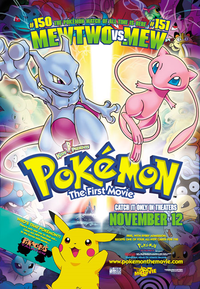
- Main article: Pokémon movie
A Pokémon movie is a feature-length work, usually animated, that is about Pokémon. Movies will usually focus on one or more Legendary or Mythical Pokémon, and for movies M01 to M19, their plot ties in with Pokémon the Series. From M20 onwards however, there is not necessarily any connection.
Animated movies often use the title Pokémon the Movie (Japanese: 劇場版ポケットモンスター Pocket Monsters the Movie). Live-action movies such as POKÉMON Detective Pikachu do not use this name.
Miniseries
Sometimes referred to as "web anime", miniseries tend to be distributed online, have only a few episodes, and have no narrative connection to the TV series.
Core series tie-ins
| Feature | Japanese run | English run |
|---|---|---|
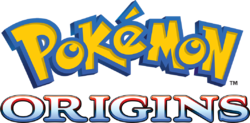 Pokémon Origins |
October 2, 2013 | November 15 - 22, 2013 |
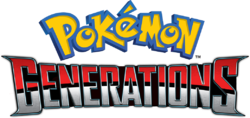 Pokémon Generations |
December 9, 2016 - February 2, 2017 | September 16 - December 23, 2016 |
 Pokémon: Twilight Wings |
January 15 - August 6, 2020 (TW01 - TW07) November 5, 2020 (TW08) |
January 15 - August 6, 2020 (TW01 - TW07) November 17, 2020 (TW08) |
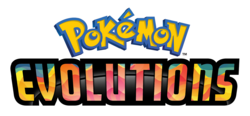 Pokémon Evolutions |
September 9 - December 23, 2021 | September 9 - December 23, 2021 |
Pokémon: Hisuian Snow |
May 18 - June 22, 2022 | May 18 - June 22, 2022 |
| Pokémon: Paldean Winds | September 6 - December 13, 2023 | September 6 - December 13, 2023 |
Spin-off series tie-ins
| Feature | Japanese run | English run |
|---|---|---|
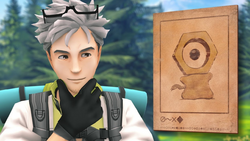 The Two Professors |
September 5, 2018 - October 24, 2018 | September 5, 2018 - October 24, 2018 |
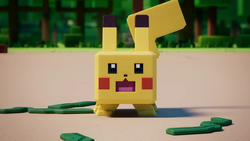 Cube-Shaped Pokémon on Cubie Island?! |
April 8 - June 18, 2023 | April 8 - June 18, 2023 |
TCG tie-ins
| Feature | Japanese run | English run |
|---|---|---|
 Pokémon: Path to the Peak |
August 14, 2023 - September 1, 2023 | August 11, 2023 - August 30, 2023 |
Miscellaneous
| Feature | Japanese run | English run |
|---|---|---|
| Pokémon Shorts | November 22, 2016 - June 16, 2021 | November 22, 2016 - June 16, 2021 |
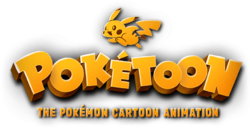 POKÉTOON |
June 4, 2020 (PT01) May 5, 2021 - December 28, 2021 |
June 17, 2022 - August 5, 2022 |
 Pokémon Concierge |
December 28, 2023 | December 28, 2023 |
Standalone specials
Standalone specials, unlike miniseries, tend to be one-shot stories that don't span across multiple episodes. These usually do not have any connection to the TV series.
Mystery Dungeon
| Feature | Japanese debut | English debut |
|---|---|---|
 Pokémon Mystery Dungeon: Team Go-Getters Out of the Gate! |
March 23, 2007 | September 8, 2006 |
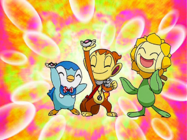 Pokémon Mystery Dungeon: Explorers of Time & Darkness |
September 9, 2007 | September 1, 2008 |
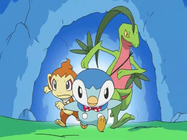 Pokémon Mystery Dungeon: Explorers of Sky - Beyond Time & Darkness |
April 12, 2009 | October 9, 2009 |
Other spin-offs
| Feature | Japanese debut | English debut |
|---|---|---|
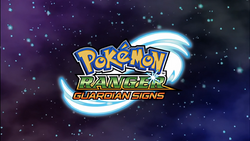 Pokémon Ranger: Guardian Signs (anime special) |
February 8, 2010 (part 1) March 7, 2010 (part 2) |
November 10, 2010 (combined version) |
 Detective Pikachu & the Mystery of the Missing Flan |
October 25, 2023 | October 25, 2023 |
Miscellaneous
| Feature | Japanese debut | English debut |
|---|---|---|
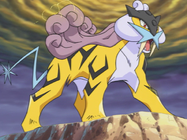 The Legend of Thunder! |
December 30, 2001 (combined version) | June 3 - 10, 2006 |
 Bidoof's Big Stand |
February 9, 2022 | January 11, 2022 |
 The Journey of One Dream |
N/A (February 28, 2023 in mainland China) |
N/A |
Animated trailers and commercials
These works tend to be short, and are intended to promote a specific game or event.
For more commercials not listed here, see Pokémon commercial.
Core series tie-ins
| Feature | Japanese debut | English debut |
|---|---|---|
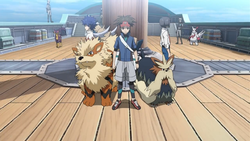 Pokémon Black Version 2 and Pokémon White Version 2 Animated Trailer |
May 17, 2012 | August 8, 2012 |
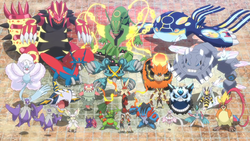 Pokémon Omega Ruby and Pokémon Alpha Sapphire Animated Trailer |
November 16, 2014 | November 20, 2014 |
Other spin-offs
| Feature | Japanese debut | English debut |
|---|---|---|
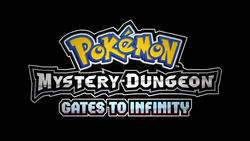 Pokémon Mystery Dungeon Animated Shorts |
November 1, 2012 | March 26, 2013 |
 Pokémon Masters Animated Trailer |
June 27, 2019 | June 27, 2019 |
Miscellaneous
| Feature | Japanese debut | English debut |
|---|---|---|
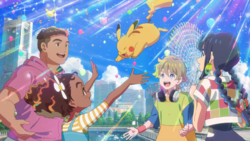 Challenge the World! |
July 22, 2023 | July 23, 2023 |
Animated music videos
| Feature | Japanese debut | English debut |
|---|---|---|
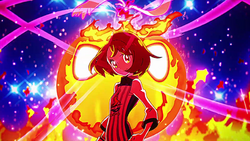 GOTCHA! |
September 29, 2020 | September 29, 2020 |
 Pokémon 25 Virtual Concert |
February 27, 2021 | February 27, 2021 |
 Celestial |
September 29, 2022 | September 29, 2022 |
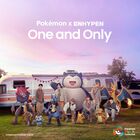 One and Only |
July 12, 2023 | July 12, 2023 |
 Pokémon Party |
August 4, 2023 | August 4, 2023 |
References
- ↑ Interview with Satoshi Nakano explaining that Iwane is still a solo-animator.
- ↑ TV Tokyo: To all fans of the Pokémon TV animated series
- ↑ 3.0 3.1 3.2 「テレビアニメ放送1000回!!ゼンリョク!ポケモンスクール」イベントリポートを更新! | テレビアニメ「ポケットモンスター」1000回放送記念!
- ↑ What is Pokémon? | The official Pokémon Website in Singapore
- ↑ 5.0 5.1 アニポケ25周年記念ベストアルバム「ポケモンTVアニメ主題歌 BEST OF BEST OF BEST 1997-2023」商品概要(2023年2月1日(水)発売) | アニメ「ポケットモンスター」 | ソニーミュージックオフィシャルサイト
- ↑ Pokémon Singapore on Facebook
- ↑ Pokémon Asia ENG on YouTube
- ↑ Pokémon Horizons: The Series influencer gift box, excerpt: "Liko is a girl from the Paldea region and the first female protagonist in the Pokémon animated series."
- ↑ アニメ「ポケットモンスター」公式 (@anipoke_PR) on Twitter
- ↑ Seeing Stars at the POKÉMON Detective Pikachu Premiere | Pokemon.com
- ↑ Pokémon Brand Sheet (August 2023)

